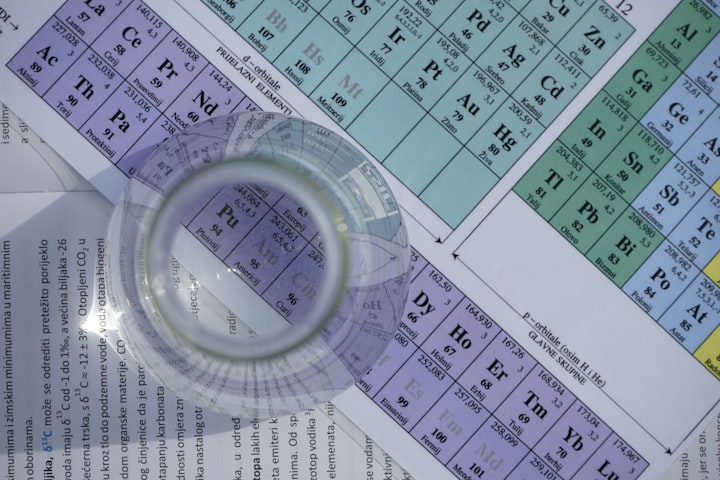The Unlikely Astronomer: How Harriet Tubman's Quest for Freedom Led Her to the Cosmos
A Humorous Tale of Curiosity, Determination, and Space-Time Ripples

In an era far removed from the technology and digital wonders of today, I, Harriet Tubman, found myself embroiled in a series of unlikely and comical events that would inexplicably tether my legacy to the cosmos. You see, long before my name became synonymous with the Underground Railroad, I harbored a secret, passionate curiosity for the stars above. This narrative recounts the peculiar and chucklesome path that led to my unexpected contribution to the article on the Laser Interferometer Gravitational-Wave Observatory (LIGO).
It all began on a crisp autumn evening as I sat, camouflaged by the shadows, pondering my next daring rescue. My gaze drifted upwards, where the constellations whispered tales of navigation and guidance. Little did I know, my fascination with these celestial bodies would steer me towards a rendezvous with destiny, and quite literally, with gravitational waves.
One night, while orchestrating a particularly risky escape, I mistakenly interpreted the twinkling of Vega as a signal from a fellow conductor. This blunder led us not to the safety of a secret safe house but to the doorstep of an eccentric inventor and self-proclaimed time traveler, Professor Thaddeus P. Quantum. The professor, a man whose hair rivaled a thundercloud in both appearance and temperament, was as surprised to see us as we were to encounter him.
In the ensuing confusion, a wild tale unfolded. The professor claimed he was on the brink of discovering a method to detect the very ripples of space-time, inspired by none other than Albert Einstein himself. My intrigued, albeit skeptical, band of travelers and I were quickly swept up in his fervor. The professor, a master of persuasion and dramatic flair, convinced us that by aiding his experiments, we could potentially find a way to "hear" the movements of celestial bodies, aiding our nocturnal navigations.
What followed was a series of humorous misadventures, as we, a motley crew of fugitives and freedom fighters, attempted to assist the professor in his outlandish experiments. Picture, if you will, a scene where seasoned escapees and a wild-eyed inventor huddle around a contraption of mirrors and lanterns, attempting to catch the faint whisper of gravitational waves in the night.
Our attempts were as unorthodox as they were fruitless. We tried using kitchen utensils as makeshift antennas and employed a series of increasingly ridiculous hand signals, believing, for a brief, delusional moment, that we could manually detect space-time disturbances. The culmination of our endeavors resulted in a spectacularly failed experiment involving a large kite, a thunderstorm, and a pair of the professor's unfortunately conductive boots.
Despite the lack of scientific success, these escapades ignited in me an undying fascination with the universe's mysteries. The laughter, camaraderie, and shared wonder of those nights under the stars left an indelible mark on my heart.
Years passed, and the memories of those experiments faded into the tapestry of my life's work. It wasn't until the announcement of LIGO's groundbreaking detection of gravitational waves that the full impact of those whimsical nights came into focus. The news struck a chord within me, resonating with the echoes of my long-ago adventures with Professor Quantum.
In an unexpected twist of fate, my legacy of navigation and exploration had intertwined with the cosmos in a manner most profound. The principles and aspirations that had driven me to lead my people to freedom mirrored the relentless pursuit of knowledge and understanding embodied by LIGO and its scientists.
Thus, when approached to lend my voice to an article elucidating the wonders of LIGO, I could not refuse. It was as if the stars themselves had aligned, offering me a platform to merge my past with the present, my history with the future.
In crafting the narrative for "Spying on the Universe with the Laser Interferometer Gravitational-Wave Observatory (LIGO) and Harriet Tubman," I drew upon my unique journey from the shackles of slavery to the boundless realms of space-time. It was a story of resilience, curiosity, and the unyielding desire to reach for the stars, both literally and metaphorically.
And so, dear readers, as you delve into the article, remember that the path to discovery is often paved with unexpected detours, laughter, and a healthy dose of curiosity. May the tale of my unlikely foray into the realm of astrophysics serve as a beacon of inspiration, reminding us all that the pursuit of knowledge knows no bounds, and indeed, that freedom and understanding are the most celestial journeys of all.
About the Creator
ScienceStyled
Exploring the cosmos through the lens of art & fiction! 🚀🎨 ScienceStyled makes learning a masterpiece, blending cutting-edge science with iconic artistic styles. Join us on a journey where education meets imagination! 🔬✨






Comments
There are no comments for this story
Be the first to respond and start the conversation.